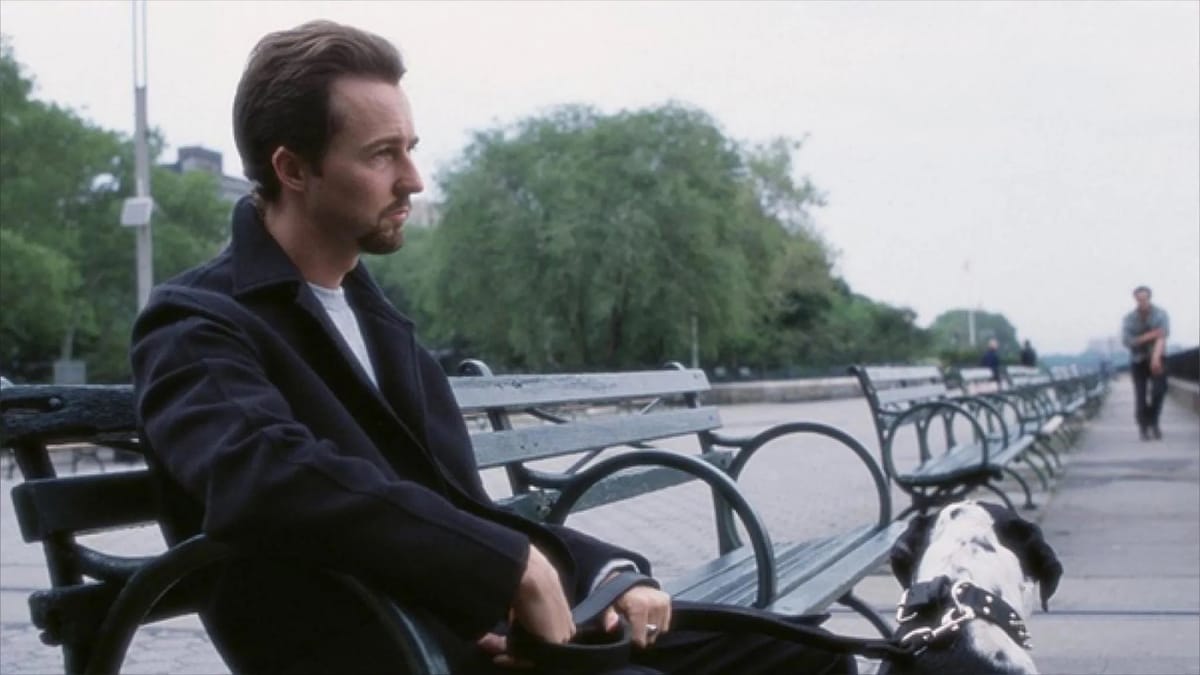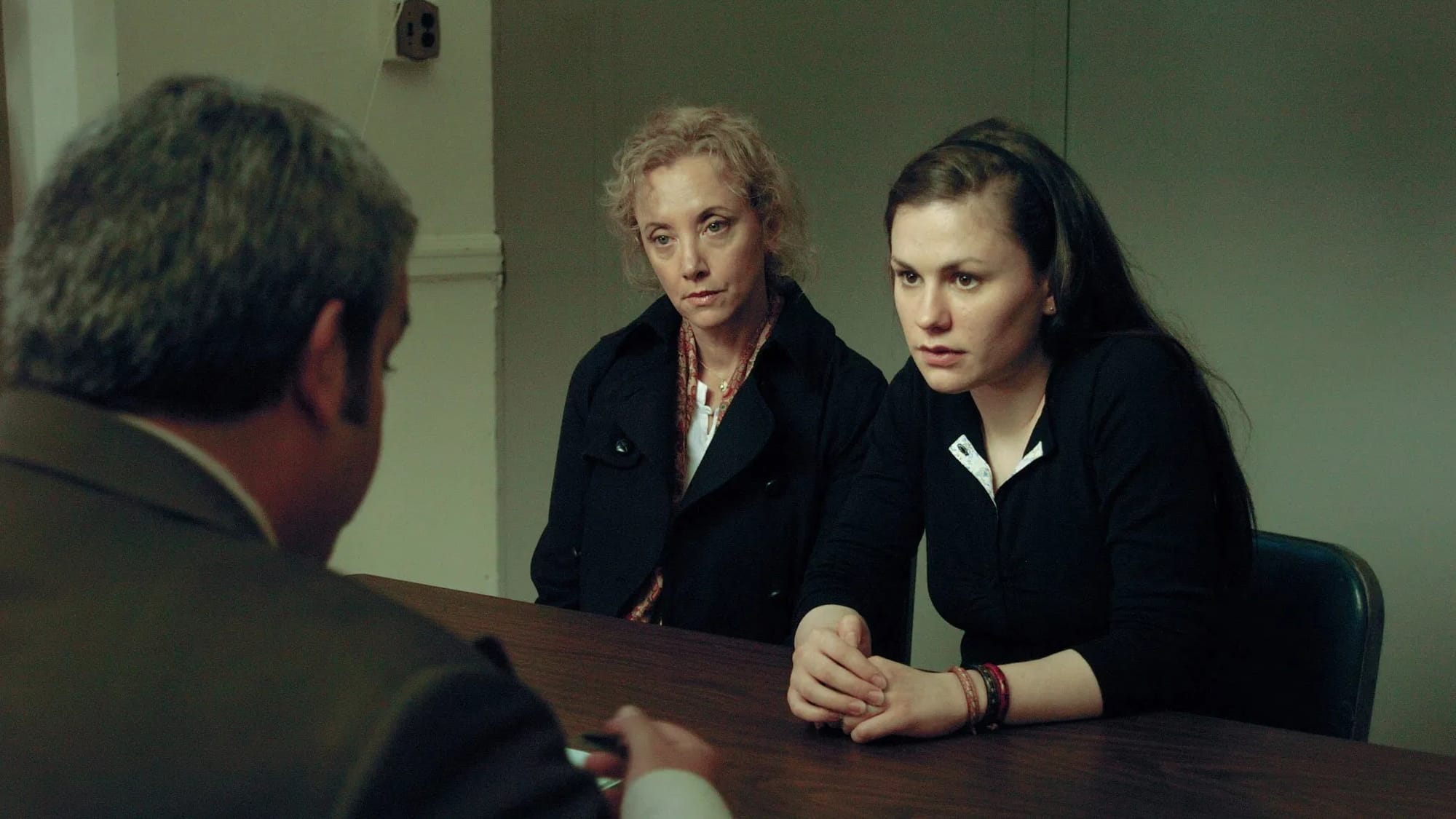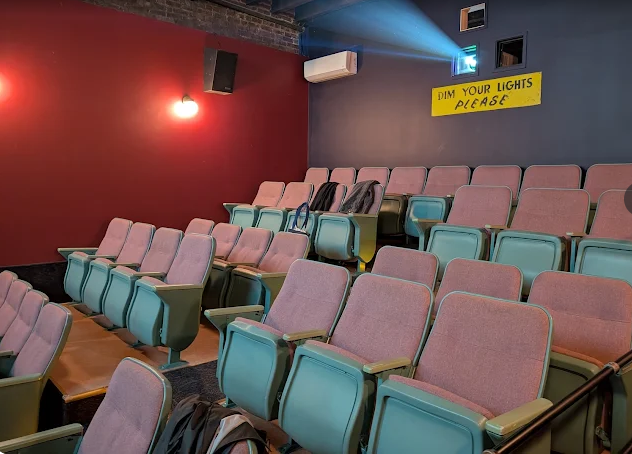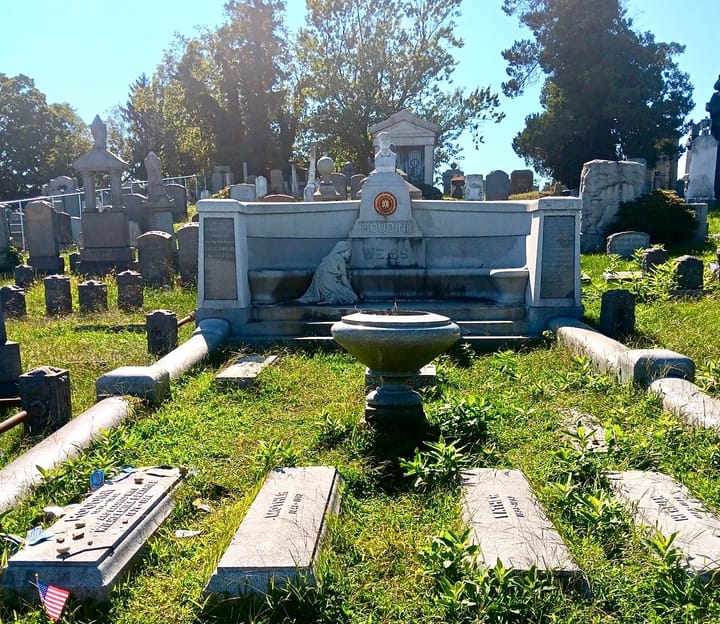Relive the aughts on the silver screen at BAM
'It's a very simple thing, I just wanted to explore this city in that era of nostalgia.'

Nostalgia is a funny thing. When the 21st century started, New York City was dealing with the aftermath of 9/11 and a recession, and a haunted mood excellently captured by TV On The Radio’s Young Liars EP. At the same time, gentrification hadn’t sanded as many edges off the city’s population or cultural life (hell the original Knitting Factory was still kicking as late as 2009) and in retrospect no one had yet fried their brains on a combination of social media and burrito taxi instant gratification.
So as we grapple with the fact that the year 2000, the year that Conan O’Brien was making all those jokes about, was an astounding 25 years ago and that the decade known as “the aughts” ended at the stroke of midnight an also astounding 15 years ago, this is the time to look back every to get a sense of what was important back then and what transcended its era. To that end, the Brooklyn Academy of Music is celebrating the aughts with a film festival dedicated to some of the best New York City-based films of the decade starting Friday and running through the end of July.
NYC 2000s is a two-week journey through some of the biggest and smallest films that were set in, filmed in and about the city and released in between 2000 and 2010. It was a time, as the series’ synopsis points out, when the city was dealing with the aftershocks of 9/11 and the recession, while it began solidifying the Bloomberg vision of itself as a global city and “luxury product.”
The festival is sure to do a good job of transporting you back to what will inevitably feel like a simpler time in the city, when one could dream of an actually stable media job (Devil Wears Prada, Phone Booth), get together for sex parties without ten thousand New York Magazine articles about it (Shortbus), live a teenage life without phones everywhere (Raising Victor Vargas) and when the craziest idea for technological advancement was a process that erased all memories of your glue-sniffing artsy ex-girlfriend from your brain (Eternal Sunshine of the Spotless Mind).
The aughts are now a full-fledged nostalgia factory with people taking a look back at anxieties, fashion, politics and the music of the era (come say hey to Tim and I at this indie dance party next month, I’ll buy you a shot), which makes this a perfect time to put together a look at the NYC films that represent the era, according to curator Yasmina Tawil.
“It's a very simple thing, I just wanted to explore this city in that era of nostalgia,” she told The Groove. “There is a current moment of nostalgia for the early 2000s not just with people like myself in their early 30s who were coming of age during this moment, but also a fascination with the era by a younger generation that didn't experience it all or was too young to really remember it. And it's an area of nostalgia that goes beyond people who grew up here, because a lot of the films in the program were so popular and ubiquitous across the country, things like The Devil Wears Prada, for instance.”
Tawil put 20 films in the series in an attempt as she put it to feature a “mix of what defined the era in terms of the big films that broke into the zeitgeist and what defined the era of what was actually happening in New York at the time,” though she was quick to say that this was not her attempt at creating the defining list of aughts-era city cinema.
It’s a solid list of flicks, with big ticket studio fare like the aforementioned Devil Wears Prada and Phone Booth, Vanilla Sky, The 25th Hour and The Royal Tenenbaums representing some of the big hitters of the era and giving people a chance to experience them for the first time or again in theaters.
The bigger movies are paired with lesser-known fare like the indie fuck fest Shortbus, Zeina Durra’s The Imperialists Are Still Alive, an exploration of art scene goofs experiencing War on Terror paranoia, and teen coming-of-age movie Raising Victor Vargas, three of the less widely-released movies Tawil said she was excited about having in the series, particularly The Imperialists Are Still Alive. A Sundance darling in 2010 that mixes early aughts art scene shenanigans with paranoia related to the long tail of the War on Terror, Tawil said the way people reacted to a previous screening she put on clued her in to how hungry people were to re-live the aughts.
“I showed it at Nitehawk as part of a series I do over there of Arab cinema called Cinema Arabiyya. When I announced it, there was a huge outpouring of excitement from people in New York and outside of New York. It's a film that a lot of people loved out of Sundance, and then have not seen in 15 years. When I showed it, what a lot of my friends and people in the audience walked away with was this nostalgia and this excitement about seeing New York in this era and reliving this era, remembering the vibes of the time, wherever you were. So I really wanted to make a space for those types of films that people know and love, but may have not seen in a long time and hopefully will rediscover,” she said.
Imperialists, Shortbus and Raising Victor Vargas are what Tawil called the “three gems” in the program, a trio of movies filmed far from sound stages or other spots substituting for New York and that delved into more low-key city existences. Tawil highlighted Shortbus for the way it captured a specific post-9/11 mood in the city, and that the Dominican-American teenage love story of Raising Victor Vargas stood out for the understated way it told a story about teenagers and especially non-white teenagers in the city.
“Shortbus is one of my favorite films of all time, and wanting to show Imperialists and Shortbus helped generate this series. There's something so honest and almost wholesome about it despite its subject matter, it's just such a fun and heartwarming film about sex. And then Raising Victor Vargas is a film that I did not know before starting to put together this film program. It's really touching, and I feel like there is a want, especially in this era, to overdramatize the stories of people of color, especially teens and and bring in drugs and teen pregnancy and crime and bad family situations, which are honest for some people's experiences, but this feels more honest what is actually happening with teenagers.”
That being said, if you can’t get to every smaller movie in the series, Tawil said the one to see is Margaret, a 2005 movie starring Anna Paquin as a high school student dealing with the trauma related to her witnessing a fatal bus crash that she may have also caused. Margaret was caught in development hell after it was actually finished, and despite a stacked cast and some film writers calling it the quintessential post-9/11 NYC movie, it never captured a wide audience. Tawil is taking full advantage of her curatorial powers to give the film one glorious afternoon.

“Margaret is going to be a really special screening, especially because we're doing the extended Director's Cut, which is not available online. And it’s like a three-hour film, so let's be honest, that's a good one to go see in a theater,” she said.
(Tawil did say she has one that got away, due to rights issues: The absolutely bonkers Ethan Hawke-starring Hamlet 2000, which if you haven’t seen you need to experience as soon as you can, if only for the unbelievable hat he wears as he does the “To be or not to be” monologue in a Blockbuster)
New York City cinema from the 2000s doesn’t have the instant cultural cache of decades like the 70s and 80s, the movies that defined the grit and glitter of a city that the movies could depict as on the brink or as glamorous as ever. But Tawil suggested that it wasn’t that the aughts is intentionally overlooked as a film decade, but that we’re only now starting to realize how long ago it all really happened. So NYC 2000s will be a chance to explore what’s behind us without just getting stuck on How To Lose A Guy In 10 Days.
“I think a lot of us don't realize how long it's been since the early 2000s. I think the films that get the most talked about in this era are the big Manhattan romcoms, a lot of which were not even shot in New York. All the movies in this program are known and loved by somebody, but there's only a couple [in it] that fully broke through and are part of the zeitgeist. So this is re-exploring and highlighting some of those smaller films that people may have seen and liked but forgot about.”




Comments ()